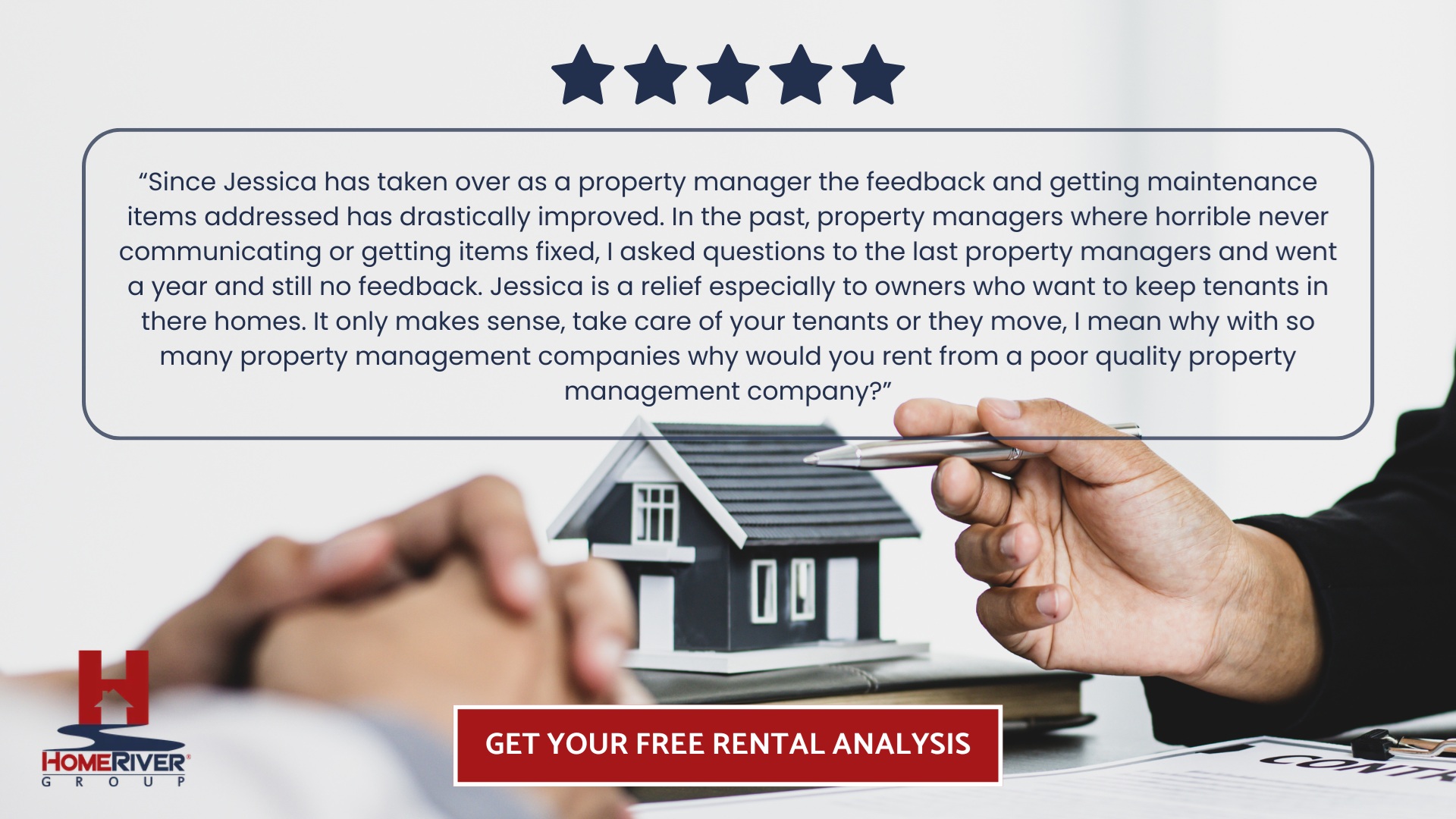
HomeRiver Group is a trusted leader in residential property management, with unmatched reach and operational strength across 32 states. We deliver consistent, professional results at scale while preserving the personalised care property owners expect. With decades of experience, streamlined systems, and expert teams in every market we serve, we help investors reduce risk, boost efficiency, and grow confidently in today’s evolving real estate landscape.
The terms “lease” and “rent” are often used interchangeably, but they represent distinct legal and financial implications for property owners. The difference between lease and rent can impact cash flow predictability, tenant stability, and how responsibilities are structured. Understanding these terms can influence your strategy and bottom line if you're managing a single unit or a growing portfolio. A closer look reveals more than just a matter of semantics.
In this blog, we will explore how lease and rent agreements differ in structure, duration, and responsibility; and what those differences mean for property owners aiming to balance stability, flexibility, and long-term profitability.
Key Differences Between Lease Agreements And Rental Agreements
Understanding the distinction between lease and rental agreements is critical for maximizing flexibility and control when navigating property ownership. On the surface, these terms might seem interchangeable, but their legal structure and operational impact differ significantly.
The Structure Of Lease Agreements
A lease agreement typically covers a fixed term, often six months, one year, or longer. Once you sign, the terms are locked in: the rent amount, responsibilities for repairs, and rules for property use won’t change until the agreement expires. This stability can attract tenants interested in long-term commitment, providing you with predictable income and a set timeline for planning future property decisions. Understanding lease extension renewal, the main differences are also significant here, as the choice between continuing a lease under the same terms or renegotiating under a new agreement can significantly impact tenant retention and income planning.
The Flexibility Of Rental Agreements
By contrast, a rental agreement usually renews every month. This arrangement is inherently flexible for both you and your tenants. You can adjust rent, modify agreement terms, or discontinue the tenancy with proper notice, usually 30 days. While this can be advantageous in dynamic rental markets, it can also introduce increased turnover and less income predictability.
Considerations Around Early Termination
Another key difference is how each type of agreement handles early termination. Breaking a lease term often involves penalties or fees, protecting you from sudden vacancies. Rental agreements, however, operate on shorter notice periods, streamlining the process if you need to reclaim possession of your property quickly.
Choosing between these agreements affects more than just timelines—it shapes your relationship with tenants, ability to adapt to market changes, and the property’s long-term strategy.
Pros And Cons Of Leasing For Property Owners
Leasing your property comes with distinct advantages and challenges that directly impact your bottom line and daily operations.
Pros
Stable, Predictable Income: With a lease, you secure a fixed rental amount for the duration of the contract, typically 12 months or longer. This consistency supports more reliable financial planning and cash flow management.
Reduced Turnover: Longer lease terms help minimize vacancy periods and the expenses associated with marketing, screening new tenants, and preparing the property between occupants.
Clear Legal Protection: Lease agreements for a defined period offer intense legal clarity on each party’s responsibilities. If disputes arise, you have a formal contract to reference.
Attracts Committed Tenants: Given their longer commitment, lessees are more likely to treat the property with care. This can reduce wear and tear and lead to more respectful tenant relationships.
Cons
Reduced Flexibility: Once a lease is signed, you’re generally locked into the terms until it ends. If market conditions change and rents rise, you won’t be able to adjust the price for existing tenants until the next leasing cycle.
Longer Commitment To Problem Tenants: While leases offer stability, they also make it more difficult to remove tenants before the end date—unless there are significant lease violations. Property owners often ask, can landlord cancel lease after signing? Generally, no—unless the tenant breaches key terms, as leases are legally binding agreements.
Potential For Market Misses: If the local market shifts or your property value increases rapidly, you might miss opportunities to capitalize on higher rental prices until the current lease expires.
Leasing is a balancing act between stability and flexibility.
Advantages And Disadvantages Of Renting Out Your Property
When considering putting your property on the rental market, it’s important to weigh the potential upsides and the risks involved. Here’s what you should keep in mind as you navigate the rental landscape:
Advantages
Flexibility: Renting allows you to maintain control over your property. You can set shorter-term agreements, making reclaiming your space or adjusting your strategy easier as market conditions shift.
Steady Income: Renting can deliver consistent cash flow, providing an ongoing revenue stream without a long-term commitment from tenants. This is particularly useful if you plan to sell or move back later.
Lower Barriers For Tenants: Renters are often drawn to properties with fewer up-front costs and obligations, which can help keep your occupancy rates high and minimize vacancies.
Scope For Adjustments: At the end of each rental period, you can reassess and modify rents or terms, giving you more options to adapt to local market trends. In cases where you need to end the agreement, understanding how much notice a landlord has to give a tenant to move out is crucial to avoid legal complications and ensure a smooth transition.
Disadvantages
Frequent Turnover: Short-term rentals often mean more tenant turnover. Higher turnover can increase wear and tear on your property and the time you spend handling move-ins, listings, and inspections.
Variable Income: With more frequent changes in tenancy, you may experience periods without rental income, especially if market demand fluctuates.
Less Security: Shorter agreements provide less stability for you and your tenants. Predicting your future income or occupancy status is harder, which can complicate long-term planning.
Potential For Increased Costs: Each new tenancy brings potential costs for marketing, screening, cleaning, and minor maintenance, which can add up over time and eat into your returns.
Understanding these factors can help you determine if renting aligns with your goals and resources as a property owner.
Legal Implications Of Lease vs. Rent
Understanding the legal frameworks behind leases and rental agreements is essential when managing your property. The terms you choose dictate the duration of your tenant’s stay and the rights and duties that both parties assume.
Lease Agreements And Fixed-Term Stability
A lease typically refers to a longer-term contract, often stretching from six months to a year or more. Once signed, the terms are generally locked in; you and your tenant are bound to the agreed-upon rent amount and responsibilities for the entire duration. This provides stability but limits your ability to change rent or policies until the lease expires. If you choose not to continue the arrangement, knowing how much notice a landlord has to give if not renewing the lease is essential to avoid disputes or compliance issues.
Rental Agreements And Month-to-Month Flexibility
A rental agreement, by contrast, usually renews every month. This flexibility means you can adjust rent more frequently and set new terms with proper notice, usually 30 days. However, it also affords your tenant the same freedom to move with less advance warning.
Legal Considerations And Risk Management
Both arrangements come with their own legal requirements, often guided by state and local regulations. For instance, leases grant more security for both parties, but breaking a lease can have significant legal and financial consequences. Rental agreements are generally easier to terminate, but require you to stay updated with evolving landlord-tenant laws.
Maximizing Returns: Lease vs. Rent Strategies
When evaluating the difference between lease and rent, your approach to maximizing returns can significantly impact your bottom line.
Income Stability Through Leasing
A lease typically locks your tenant into a longer, fixed-term agreement, often twelve months or more. This contract provides a level of security for your income, protecting you from frequent turnover and vacancies. With stable, predictable payments, you can plan for maintenance, reinvestment, or portfolio growth. The consistency of leases is especially appealing in markets where demand fluctuates seasonally or economic shifts can affect occupancy rates.
Market Responsiveness With Rental Agreements
A rental agreement, on the other hand, generally refers to a shorter-term or even month-to-month commitment. This option offers you a greater level of flexibility to adjust rent in response to changing market values, updating terms quickly if conditions shift. If your property is in an area seeing rapid rent increases, frequent renewals give you the opportunity to reflect market rates quickly, boosting return. However, that same flexibility means a greater risk of vacancy and increased tenant turnover, which may lead to more administrative costs and potential periods without income.
Strategic Decision-Making For Long-Term Gains
To maximize returns, weigh the stability of leases against the adaptability of rentals. Consider factors such as local supply and demand, tenant demographics, and your own comfort with management intensity. Transitions in oversight, such as what happens when property management changes, can also affect how effectively these strategies are executed. It is essential to work with professionals who can maintain continuity and performance. By strategically choosing between lease and rent, you can position your property to achieve the best possible performance in your market.
Final Thoughts
Understanding the difference between lease and rent is essential when deciding how best to manage your property. Both arrangements have unique advantages and require a tailored approach depending on your goals as a property owner. A lease tends to favor stability and long-term predictability. On the other hand, renting offers flexibility to adjust terms, adapt to market changes, and easily manage shorter tenancies. When choosing between lease and rent, consider the legal obligations, investment strategy, and the tenant relationship you wish to build.
At HomeRiver Group, we leverage our local expertise and national reach to help you evaluate which option best meets your needs. Our comprehensive management services also mean you have access to transparent reporting, market data, and dedicated support, so you can make informed decisions with confidence.
Let us help you maximize your returns and minimize risks no matter which route you choose. Your property is our priority.
Read also:
Benefits of Owning a Rental Property in Delaware and NOT SELLING
How To Get Out Of A Lease As A Landlord: Legal Options Explained
What Does Landlord Insurance Cover? A Complete Guide For Rental Owners
Frequently Asked Questions About The Difference Between Lease And Rent
What is the difference between leasing and renting a property?
Leasing typically involves a fixed-term agreement, most often for a year or more, with terms and conditions set from the start. Renting usually refers to short-term agreements that often renew on a month-to-month basis.
Can a lease agreement have a shorter term than a rental agreement?
While leases usually cover longer durations, you can negotiate shorter lease terms if both parties agree. However, most rental agreements remain more flexible, offering easy renewal or termination on shorter notice, ideal for tenants who may not want long-term commitments.
Why might a property owner choose to lease over rent?
Choosing to lease gives you more predictable occupancy and stable income. Leases lock in tenants and rent rates for a set period, providing greater financial security for property owners. If you prioritize stability for your investment, leases are an effective tool.
How does the maintenance responsibility vary between a lease and a rental?
In both setups, maintenance clauses are determined by the agreement. Leases often outline more detailed maintenance expectations since they last longer, while rental agreements may be more flexible but require regular communication about upkeep. At HomeRiver Group, we help you create clear contracts so there’s no confusion over who handles repairs.
What are the tax implications for leasing versus renting property for owners?
Both lease and rental income generally qualify as taxable income, but tax planning can be nuanced depending on local and federal regulations. While the length of the agreement rarely affects taxation, your reporting, allowable deductions, and depreciation claims can differ based on property use and occupancy. Consult a qualified tax professional for specifics—HomeRiver Group can connect you to trusted partners.
Are there different legal implications for landlords between leasing and renting?
Formal leases tend to include more extensive legal language and can offer more protection to both parties since the terms are locked in for longer periods. Rental agreements are more fluid, allowing for faster changes, but may require more frequent legal updates.











